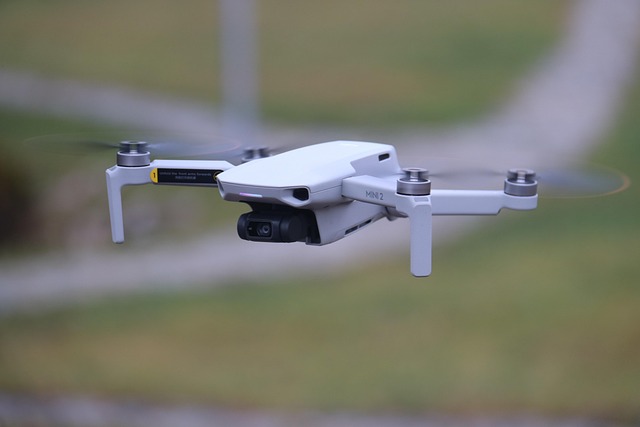Drone security services are transforming event management by offering a comprehensive, real-time risk assessment solution for large-scale gatherings. Equipped with advanced sensors like high-res cameras and thermal imaging, drones swiftly cover vast areas, identifying crowd risks, unusual behaviors, and hard-to-reach hazards. These aerial vehicles provide an overhead perspective invaluable for complex crowd management, access control, and incident mitigation. Case studies show their success in major sporting events and music festivals, where they facilitate quick responses and enhance overall security measures.
Drone-enabled risk assessments are transforming event safety, offering unprecedented capabilities for large-scale gatherings. This article delves into the modern application of drone technology in enhancing security measures, specifically focusing on its role in risk assessment and the benefits it brings to event planners.
From enhanced surveillance to efficient crowd management, drone security services provide a comprehensive solution. We explore successful implementations through case studies, offering valuable insights for integrating these innovative practices into event planning strategies.
Understanding Drone Technology for Security: A Modern Approach
Drone technology has revolutionized various industries, and its application in security services is no exception. Drone-enabled risk assessments are a modern approach to enhancing safety at large-scale events and gatherings. These advanced aerial vehicles are equipped with high-resolution cameras, thermal imaging, and other sensors that provide a comprehensive view of the event grounds. They can cover vast areas swiftly, allowing security teams to monitor crowds, identify potential risks, and respond promptly.
Integrating drone technology into risk assessment strategies offers numerous advantages. Drone security services can capture real-time footage, providing an overhead perspective that ground-based cameras may miss. This enables more effective crowd management, as security personnel can quickly detect unusual behavior or potential threats. Furthermore, drones can access hard-to-reach areas, ensuring a thorough sweep for any dangers. With their versatility and precision, drones are transforming the way we approach event security, making them an indispensable tool in the modern safety arsenal.
Enhancing Event Safety: The Role of Drones in Risk Assessment
Drone technology is revolutionizing event safety management, offering a comprehensive and efficient approach to risk assessment for large-scale events and gatherings. These unmanned aerial vehicles (UAVs) provide a bird’s-eye view of the venue, allowing security teams to identify potential hazards and plan interventions with precision. By utilizing drone security services, organizers can mitigate risks associated with crowd management, access points, and even post-event environmental impact.
The versatility of drones enables them to reach areas that are often challenging for ground-based personnel to access, ensuring a thorough inspection. They can quickly survey vast venues, capturing high-resolution images and videos that aid in identifying potential safety concerns. This real-time data gives event managers an edge in making informed decisions, enhancing overall security measures and ensuring the well-being of attendees.
Benefits of Drone-Enabled Risk Assessments for Large Gatherings
Drone-enabled risk assessments are transforming the way large-scale events and gatherings are managed, offering a host of benefits that enhance safety and security. These advanced drone security services provide a comprehensive, efficient, and cost-effective solution for evaluating potential risks in hard-to-reach areas or across expansive venues. By leveraging aerial technology, event organizers can gain unprecedented access to overhead perspectives, allowing for more accurate threat detection and hazard identification.
Drone surveillance enables real-time monitoring of vast spaces, traffic flows, and crowd behavior, facilitating proactive risk mitigation strategies. This capability is particularly valuable in crowded public settings where quick response times are crucial. Moreover, drones equipped with high-resolution cameras and thermal imaging sensors can detect heat signatures, identify potential fire hazards, or even locate missing persons, significantly enhancing incident management capabilities during large gatherings.
Implementation Strategies: Integrating Drone Security Services into Event Planning
The integration of drone security services into event planning is a strategic move that enhances overall safety and security. Event organizers can leverage drones for comprehensive risk assessments, offering a unique perspective from above. By deploying drone technology, security teams gain access to real-time data, enabling them to identify potential threats or hazards that might be missed during traditional ground-level surveys. This advanced surveillance capability is particularly valuable for large-scale events where crowd management and access control are significant challenges.
Implementing drone security services requires a well-coordinated approach. Event planners should collaborate with licensed drone operators who possess the expertise and equipment to conduct aerial assessments efficiently. These professionals can provide customized solutions, ensuring drones operate within legal boundaries while maximizing their potential. Regular briefings and training sessions for event staff on drone usage protocols will further strengthen the overall security framework.
Case Studies: Successful Drone Surveillance at Major Events
Drone-enabled risk assessments have proven their value in ensuring safety at large-scale events and gatherings. Case studies from around the globe highlight their successful deployment. For instance, during major sports tournaments, drones equipped with high-resolution cameras and advanced sensors have been instrumental in monitoring crowds, identifying potential security threats, and providing real-time intelligence to ground teams. This enhanced aerial surveillance allows for swift response times, thereby enhancing overall event security.
Similarly, music festivals and cultural celebrations have benefited from drone security services. Drones can cover vast areas, offering a comprehensive view of the event landscape. They can detect unusual activities or potential hazards that might be missed by ground-based observers. For example, at a recent music festival, drones were used to monitor traffic flow, manage crowd density, and even assist in rescue operations, showcasing their versatility and effectiveness in complex environments.
Drone technology has emerged as a game-changer in event and gathering security, offering unprecedented capabilities for risk assessment. By leveraging drone-enabled surveillance, organizers can enhance overall safety, quickly identify potential hazards, and make informed decisions. The benefits are clear: improved situational awareness, efficient risk mitigation strategies, and reduced liability. Implementation strategies outlined in this article provide a roadmap for integrating these advanced drone security services into event planning, ensuring a safer and more secure environment for all attendees. As the use of drones becomes increasingly normalized, their role in large-scale events will undoubtedly continue to grow, shaping the future of event management and public safety.
